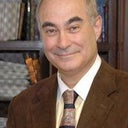With all due respect to my other colleagues posting here about how "technically difficult" it is to repair this problem, I first encountered this problem over 20 years ago when seeing facelift patients of other plastic surgeons. The best "fix" is avoiding the problem in the first place via better facelift technique, but there really is a technically "easy" correction when this problem is encountered.The soft, mobile earlobe is a really poor place from which to suspend the facial tissues during facelift and necklift procedures. Unfortunately, many facelift surgeons do just that and end up with "pulled" earlobes, widened visible scars in front of the ears, or even regular "hanging" earlobes turned into attached "pixie" earlobes. I was asked to "fix" these by unsatisfied patients, usually very early after their facelifts, when redoing the entire facelift was neither necessary, nor something ANY patient wanted to do. Frequently their own surgeon had already tried to excise and revise the scar, only making things tighter, and ending up with the same problem, only worse. (Your pulled and blunted tragus and "gun barrel" ear canal is another problem, but for another question.)










